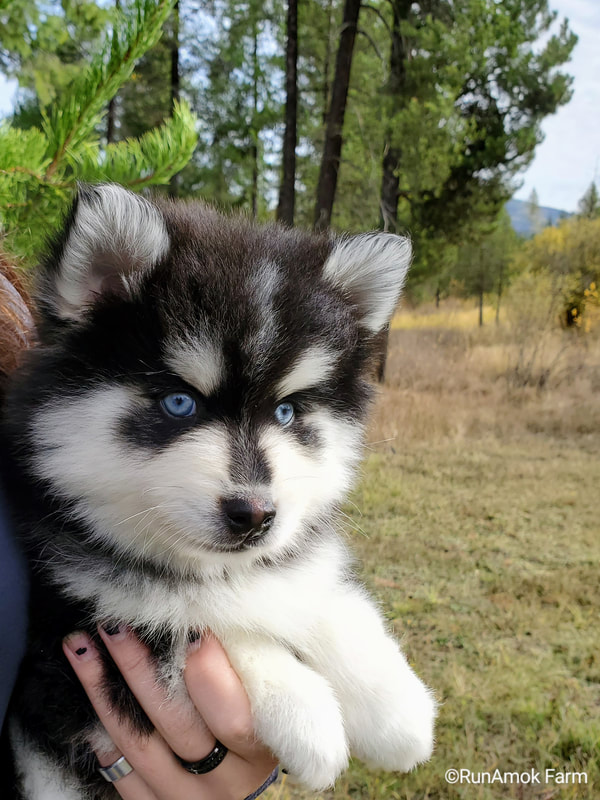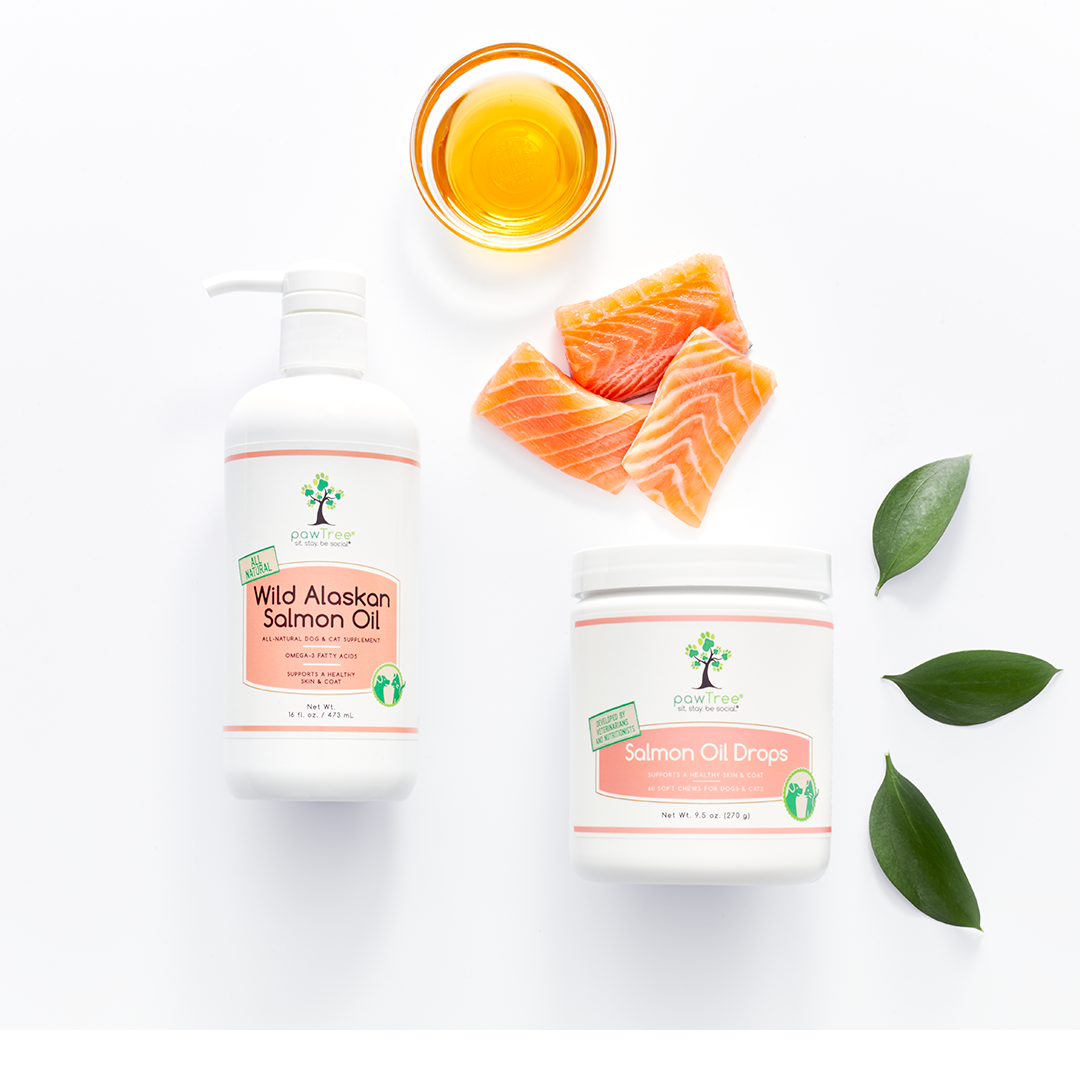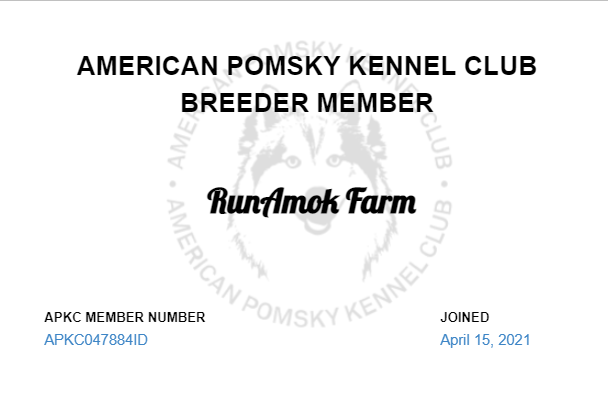RUNAMOK PUPPY ESSENTIALS Bringing home a new puppy should be a joyful experience! Doing so on a whim, without proper planning can create undue frustration for you and your puppy. With some planning, you will find the first weeks of transition and training will go more smoothly... and that IS something to be joyful about!  INTERIOR PUPPY EXERCISE PEN: These come in a variety of sizes, materials and styles, and can be purchased in pet stores, feed stores, or online. We list this item first as it will help you start your puppy off right, and will be one of your best house-training tools. For younger puppies and indoor use, we recommend a 4 - 5 foot tall, covered, 8-panel puppy pen. These pens can be positioned in a variety of shapes and angles (round, square, rectangle, even L-shaped) and will keep your puppy safe and out of trouble while you are not actively supervising them, whether you are just busy around the house or gone several hours for work. *Why covered? This prevents a younger puppy from climbing up and over the pen – once they do this, it is harder to prevent them from escaping as they get older. We want to develop good habits, not train escape-artists! For house-training, we usually place these pens on easy to clean flooring with a non-slip kennel pad (never on the carpet!) and not on plain wood or linoleum, as these slippery surfaces can cause issues with developing joints. Place their crate, food/water bowls, and a couple toys inside the pen, along with a potty tray (if continuing the tray-training we started here.) The goal is to contain the puppy, giving a safe space for sleep but also room to stretch and play with toys. Always work toward outside potty trips, but the tray can be used for times you will be gone hours in between. 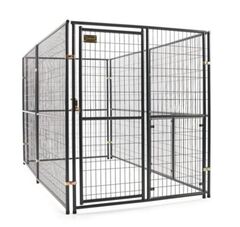 EXTERIOR WELDED WIRE PEN: These are absolutely worth their weight in gold. A 10X10 or larger, covered, welded wire kennel system will provide a safe place for your puppy outside. The puppy will h ave plenty of room to exercise while remaining safe from predators or other dogs which might come into your yard. While we don't like to think about such things, with a lock on the gate, a well-made pen is a deterrent from someone who might otherwise grab a puppy over your fence. (Not a substitute for real security systems.) These are absolutely a “win-win”, across the board. These are not just a “puppy item”, but an excellent option for adult dogs as well.  CRATE: How big and what kind? What you need honestly depends on how much traveling you intend to do. Enclosed, plastic, airline-approved crates, such as the "Petmate Sky Kennel" or “Iris Deluxe Pet Travel Carrier” are the most versatile as they are airline-approved and also fit nicely inside a vehicle. The metal indoor crates are common in many households, but are not our favorite. They take a bit more work to clean, and most brands are not nearly as convenient for travel. More important than cleaning, for a pup intent on escaping a crate, the metal bars can be chewed or bent, in at least some instances causing injury to the puppy or dog. Keeping in mind that most dogs are content in these wire crates, so if this feels like a better option and you will be around to supervise as your puppy settles in, this may be a fine option for your family. Whichever you choose, we definitely recommend continuing the crate-training we have started! *If you are shipping your puppy, he/she will arrive in a smaller, airline-approved shipping crate as described above. This will fit your puppy for a short time, but you will need to upgrade to a larger sizing if you wish to continue training to adulthood. We begin crate-training at around 7 weeks, so if you are meeting us in person you are welcome to purchase your puppy's new crate directly from us. Going home in the crate they already consider their “bed” can help them feel more secure while transitioning from our home to your home. 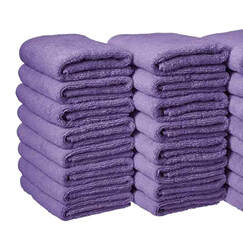 BEDDING: You can spend a lot of money on cute puppy blankets and padded beds, believe me. While these things can be “fun” and make you feel happy, the price adds up quickly. With typical puppy messes, exuberant play, chewing, and tug-of-war these expensive blankets or pads can be a waste of money on young puppies. We tend to be more practical: Nice, medium-quality bath towels are what we purchase and use for our puppy crates. Towels are hardy and made to be washed and dried frequently – and, compared to specialized puppy blankets, very inexpensive. Puppy bedding should be washed every few days, in hypoallergenic laundry wash (NO “GAIN” or overly-perfumed laundry soap) so we suggest saving your money and going with “practical” for the first few months. (Think Walmart or Amazon basic towels as they are inexpensive and easily replaced.  BOWL & WATER DISHES: The types of food and water bowls you use are important! As with puppy blankets, we can get caught up with the cute designs we see on plastic and ceramic bowls. Though fun, these are not a good choice. There is the obvious issue of chewing and possibly ingesting sharp chunks of plastic; ceramic bowls can be broken and cause injuries as well. A puppy can also develop an allergy to the plastic or sometimes the cheap glaze from products produced in foreign countries, resulting in itchy, weepy sores around their mouth and nose. Toxic metals can cause poisoning as well. It is best to purchase a set of food-grade, stainless steel bowls for both food and water. These do not have to be expensive – a decent set can be found for under $15 and will last for many years, if the puppies or kids don't take off with them! You can purchase ones which sit on the floor or ones that attach to the kennel. We like this style best for younger pups, so they don't drag their bowls around while playing. 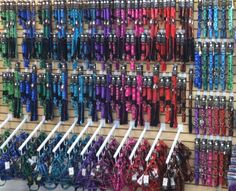 LEASH/COLLAR OR HARNESS: We believe in starting a puppy's training as soon as they come home. This does not mean one must follow rigorous training sessions every day – but the basics are readily teachable to very young puppies and for an exceptional, well-trained adult you will be proud of, we recommend starting young. Improperly fitted collars can result in serious injury, open sores, infection, and death. If a collar is too loose, a puppy can get its lower jaw hooked under the collar and break its jaw, or even hook a front leg through the collar, creating a serious strangulation hazard! Likewise, you will need to check daily to ensure your puppy's collar is not becoming too tight or causing raw spots around it neck as it is growing. This is where a quality collar is far better than a cheaper collar from a pet store, but even the most expensive collar can cause injury if it is not fitted correctly. Extra precautions should be taken in multiple-puppy homes as a pup can get its teeth or leg hooked through the other puppy's collar during playtime, resulting in jaw injury, leg injury, and potentially strangling the collared puppy. Leather collars are a “classy”, comfortable option for older adolescents and adults, if they will not be spending much time in the rain or swimming. Honestly, while any simple, well-fitted collar should work well, we prefer to upgrade a bit and buy better quality collars. Alternately, a harness can be a great choice. There are many brands on the market, some better quality than others. Same cautions as above, you need to make sure the harness fits properly and is not something the puppy can escape from. You also need to be sure the harness does not impede natural movement. Shown are Lupine collars, leashes and harnesses, but whatever type of collar or harness you choose, make sure you also have a nae tag attached, providing your phone number in case your puppy were to escape the house or get lost on a walk.  SHAMPOO & CONDITIONER: Remember that a naturally-reared puppy (eating species-appropriate foods) typically will not smell "doggy" like kibble-fed dogs often do. In fact, raw-fed dogs generally have very little odor at all, so with the exception of potty accidents or muddy playtime, if you are naturally-rearing your puppy, it will not be necessary to shampoo your puppy often. There are many shampoo products on the market and most are fairly expensive. For the price, NuVet Labs puppy shampoo & conditioner line is quite good - and one bottle lasts a long time; a “tearless” formula which removes odors, is pH-balanced, biodegradable and is detergent and soap free - it also comes in a large, 17 oz bottle. Regardless of where you purchase, be sure to find a shampoo which is pH-balanced for dogs... and don't bathe them with shampoo frequently.  BRUSHES: We use two different kinds of tools for loose hair-remvoal. One is the typical pet brush with the plastic bristles on one side and the metal "slicker" bristles on the other. This cleans and detangles while removing the occasional loose hair. The other tool is called an "undercoat rake" and is fabulous for getting that shedding undercoat stripped out. (This is just an example of an undercoat rake. Most brands are similar.) If your puppy has a wooly coat or if you plan for an extra-special grooming session, you will also need regular hair-cutting scissors or clippers for trimming under the tail (bum-area) – This is called a “sanitary trim”. 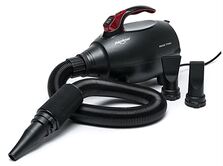 BLOW-DRYER Grooming isn't complete without a good blow-dry, especially during the spring and fall shed. During this time the puppies will blow its coat in preparation for the changing weather. A solid grooming session or two will head off weeks of hair floating through your home. Trust us. We use a blow-dryer designed for groomers and it is fantastic. Best. Purchase. Ever. (Well, almost!)  NUVET PLUS CANINE SUPPLEMENTS NuVet Plus Canine Supplements can be purchased directly from NuVet Lab at 800-474-7044. We use and recommend NuVet Plus Canine Formula and have for almost 15 years. They have other supplements as well, including a joint formula - as well as products for felines. NUVET LAB 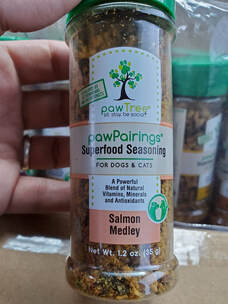 PAWTREE "pawPairings" from pawTree are a fun, tasty way to dress up your 4-legger's meals - while providing some extra, real nutrients from real foods! These are great, whether is "naturally-reared" (on real food only) or being raised up on kibble products. (We don't recommend a kibble diet but understand everyone is at a different place in their journey. These offer some variety and a bit of a boost too!) PAWPAIRINGS 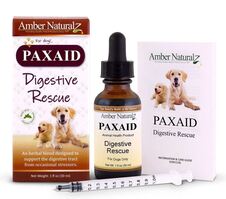 NUTRACEUTICALS Amber Naturalz has some amazing nutraceutical products that we recommend, but we consider “Paxaid” & “Vibactra Plus” as true essentials for your puppy first aid kit. Just fantastic products. We have used these for years. You can message us if you would like more information. 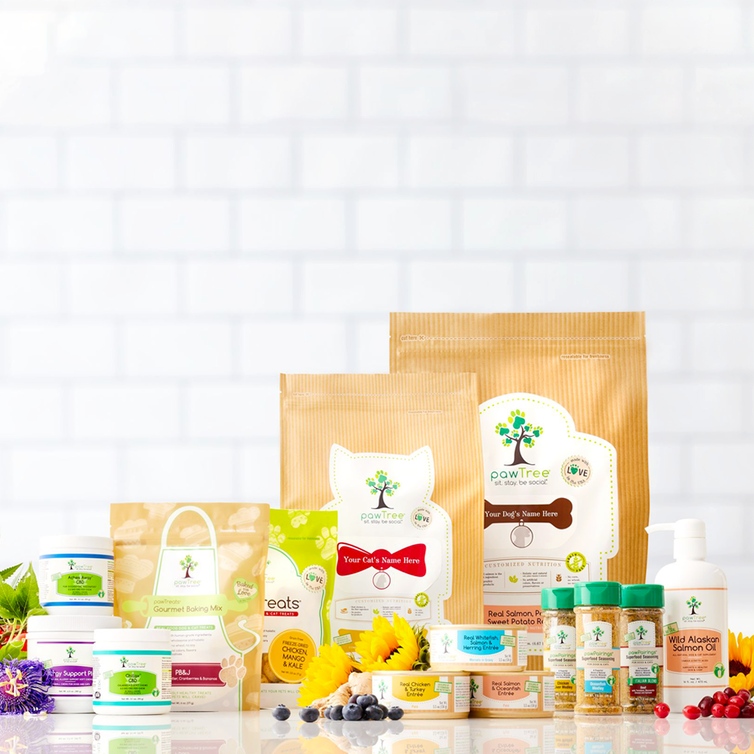 Some terrific products for naturally-reared or conventionally-reared canines! Freeze-dried training treats, Salmon oil and chews, CBD/Hemp products, flea and tick remedies, toys, food... the list goes on and on! Check out the site and the list of our recommended products – you may find something for your favorite 4-legger! PAWTREE  FLEA & TICK CONTROL: We are really not crazy about putting poisons on our dogs for flea & tick control, especially the monthly applications. Healthy dogs don't seem to attract fleas or ticks, except for the occasional straggler, so we can be pretty lenient about our practices. With proper feeding practices, most healthy dogs do not attract parasites in the way unhealthy dogs do. A malnourished or sickly animal will become run-down and overwhelmed very quickly by parasites, but this is not the case with very healthy animals. Parasites take advantage of the weak, and though they won't turn down a "meal" on a healthy animal, they don't seem to congregate like they do on an already compromised one. That said, due to climate, some areas are completely infested with parasites and it is impossible to control without some help. PAWTREE has a natural flea, tick and mosquito repellent that kills the buggers on contact. FLEA & TICK SPRAY There are some other companies with highly-rated natural products, such as Wondercide. We like several of their products. (Be careful with any products around cats, as cats are more sensitive.) FOOD: Food really isn't at the bottom of the list, but if you are bringing home one of our puppies, we have already discussed our feeding program with you at great length. If you just happened to visit us here, you may be unfamiliar with "natural-rearing" or the concept of feeding real, whole, fresh, raw foods... so you can visit our NATURAL REARING and CANINE NUTRITION sections for more information. For our puppy owners, the decision to focus on real foods is already set. I am including some additional ideas here as we do use a kibble product as well as raw foods for our weaning puppies as several from each litter will be shipping to their new homes - and airlines do not allow the use of fresh or raw foods during transit. Puppies have been eating Instinct Raw Boost Puppy food in the morning and evening, and fresh raw foods during the day. That should pretty well cover the basic supplies! If you have any questions, please feel free to call or email.
Jaque McHenry ©2021 www.runamokfarm.com Comments are closed.
|
AuthorOver 70 years combined experience raising happy, healthy canines. Most would consider us to have reached "expert level" when it comes to everything canine, but the truth is, there will always be more to learn. Archives
March 2021
CategoriesAll natural, simple ingredient freeze-dried treats! How GOOD does that sound!?
Introducing pawTree’s nutrient-rich Wild Alaskan Salmon Oil. Not all salmon oil is the same.
|




 RSS Feed
RSS Feed
